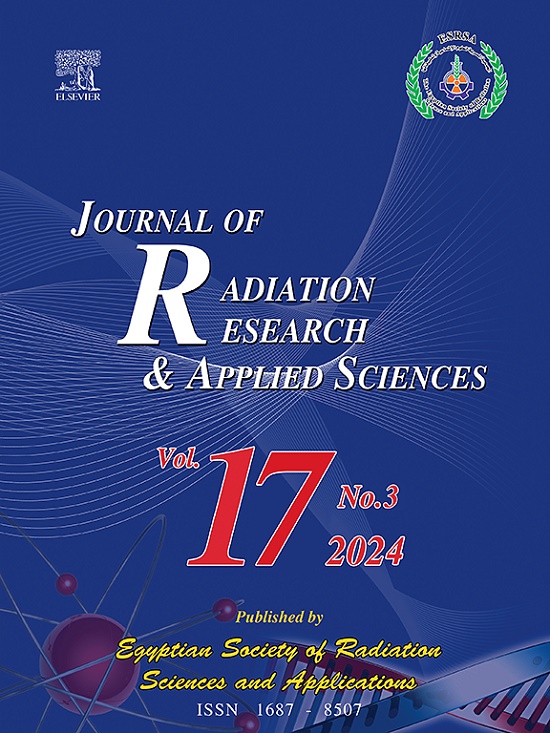Integrative diagnostics of cancer's extracellular matrix: Synergizing imaging and multi-omics for precision medicine
IF 1.7
4区 综合性期刊
Q2 MULTIDISCIPLINARY SCIENCES
Journal of Radiation Research and Applied Sciences
Pub Date : 2025-05-26
DOI:10.1016/j.jrras.2025.101636
引用次数: 0
Abstract
The extracellular matrix (ECM) is a highly dynamic and biologically active network that plays a critical role in tissue homeostasis, development, and disease. In cancer, ECM remodeling—characterized by altered protein composition, increased matrix-degrading enzyme activity, and basement membrane disruption—contributes significantly to tumor progression, invasion, and metastasis. Understanding these molecular alterations is essential for improving cancer diagnostics and therapeutics. This review explores advanced methodologies for investigating ECM dynamics, with a particular focus on the integration of mass spectrometry and molecular imaging. Mass spectrometry offers high-resolution proteomic and metabolomic profiling, enabling detailed characterization of ECM composition and post-translational modifications. Concurrently, molecular imaging modalities such as PET, SPECT, and MRI provide non-invasive, in vivo visualization of ECM alterations and tumor microenvironment changes. The synergistic use of these platforms allows for comprehensive spatial and molecular insights into ECM remodeling, supporting early cancer detection, real-time monitoring of therapeutic response, and development of ECM-targeted treatments. Moreover, circulating ECM-derived proteins are emerging as promising biomarkers for liquid biopsy-based cancer diagnosis. The convergence of imaging and mass spectrometry technologies holds great potential to enhance diagnostic precision and inform personalized treatment strategies. This integrative approach represents a transformative step toward improved clinical outcomes in cancer care.
肿瘤细胞外基质的综合诊断:协同成像和多组学用于精准医学
细胞外基质(ECM)是一个高度动态和生物活性的网络,在组织稳态、发育和疾病中起着关键作用。在癌症中,ECM重塑——以蛋白质组成改变、基质降解酶活性增加和基底膜破坏为特征——对肿瘤的进展、侵袭和转移有重要作用。了解这些分子变化对于改善癌症诊断和治疗至关重要。这篇综述探讨了研究ECM动力学的先进方法,特别关注质谱法和分子成像的集成。质谱分析提供高分辨率的蛋白质组学和代谢组学分析,能够详细表征ECM组成和翻译后修饰。同时,分子成像方式,如PET、SPECT和MRI,提供了无创的体内ECM改变和肿瘤微环境变化的可视化。这些平台的协同使用允许对ECM重塑进行全面的空间和分子洞察,支持早期癌症检测,治疗反应的实时监测,以及ECM靶向治疗的开发。此外,循环ecm衍生蛋白正在成为基于液体活检的癌症诊断的有前途的生物标志物。成像和质谱技术的融合在提高诊断精度和个性化治疗策略方面具有巨大的潜力。这种综合方法代表了改善癌症治疗临床结果的变革性步骤。
本文章由计算机程序翻译,如有差异,请以英文原文为准。
求助全文
约1分钟内获得全文
求助全文
来源期刊

Journal of Radiation Research and Applied Sciences
MULTIDISCIPLINARY SCIENCES-
自引率
5.90%
发文量
130
审稿时长
16 weeks
期刊介绍:
Journal of Radiation Research and Applied Sciences provides a high quality medium for the publication of substantial, original and scientific and technological papers on the development and applications of nuclear, radiation and isotopes in biology, medicine, drugs, biochemistry, microbiology, agriculture, entomology, food technology, chemistry, physics, solid states, engineering, environmental and applied sciences.
 求助内容:
求助内容: 应助结果提醒方式:
应助结果提醒方式:


